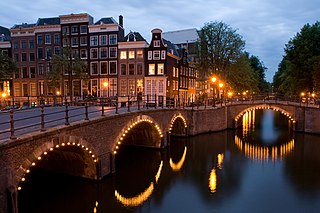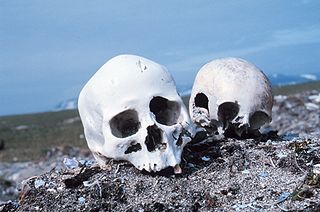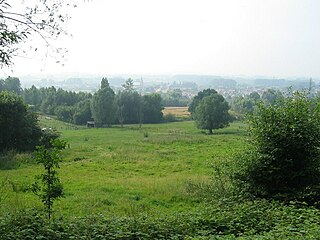
Amsterdam is the capital and most populous city of the Netherlands with a population of 872,680 within the city proper, 1,558,755 in the urban area and 2,480,394 in the metropolitan area. Found within the province of North Holland, Amsterdam is colloquially referred to as the "Venice of the North", attributed by the large number of canals which form a UNESCO World Heritage Site.

Geldrop-Mierlo is a municipality in the southern Netherlands, in the province of North Brabant. The municipality was created from the two former municipalities of Geldrop and Mierlo on 1 January 2004.

Castricum is a municipality and a town in the province of North Holland in the Netherlands.

The Binnenhof is a complex of buildings in the city centre of The Hague, Netherlands, next to the Hofvijver. It houses the meeting place of both houses of the States General of the Netherlands, as well as the Ministry of General Affairs and the office of the Prime Minister of the Netherlands. Built primarily in the 13th century, the Gothic castle originally functioned as residence of the counts of Holland and became the political centre of the Dutch Republic in 1584. It is counted among the Top 100 Dutch heritage sites. The Binnenhof is among the oldest Parliament buildings in the world still in use.

The Gender is a stream in the Dutch province of North Brabant. It originates in originally marshy flatlands near Steensel and flows through Veldhoven and its eastern district Meerveldhoven in a general east-northeast direction towards Eindhoven.

Leiden University Library is a library founded in 1575 in Leiden, Netherlands. It is regarded as a significant place in the development of European culture: it is a part of a small number of cultural centres that gave direction to the development and spread of knowledge during the Enlightenment. This was due particularly to the simultaneous presence of a unique collection of exceptional sources and scholars. Holdings include approximately 5,200,000 volumes, 1,000,000 e-books, 70,000 e-journals, 2,000 current paper journals, 60,000 Oriental and Western manuscripts, 500,000 letters, 100,000 maps, 100,000 prints, 12,000 drawings and 300,000 photographs. The library manages the largest collections worldwide on Indonesia and the Caribbean. Furthermore, Leiden University Library is the only heritage organization in The Netherlands with three registrations of documents in UNESCO's Memory of the World Register.

3D scanning is the process of analyzing a real-world object or environment to collect data on its shape and possibly its appearance. The collected data can then be used to construct digital 3D models.

Forensic facial reconstruction is the process of recreating the face of an individual from their skeletal remains through an amalgamation of artistry, anthropology, osteology, and anatomy. It is easily the most subjective—as well as one of the most controversial—techniques in the field of forensic anthropology. Despite this controversy, facial reconstruction has proved successful frequently enough that research and methodological developments continue to be advanced.

Amsterdam Centraal Station is the largest railway station in Amsterdam in North Holland, Netherlands. A major international railway hub, it is used by 192,000 passengers a day, making it the second busiest railway station in the country after Utrecht Centraal and the most visited Rijksmonument of the Netherlands.

Myrtis is the name given by archaeologists to an 11-year-old girl from ancient Athens, whose remains were discovered in 1994–95 in a mass grave during work to build the metro station at Kerameikos, Greece. The name was chosen from common ancient Greek names. The analysis showed that Myrtis and two other bodies in the mass grave had died of typhoid fever during the Plague of Athens in 430 BCE.

Brittenburg was a Roman ruin site west of Leiden between Katwijk aan Zee and Noordwijk aan Zee, presumably identical to the even older Celtic Lugdunum fortress. The site is first mentioned in 1401, was uncovered more completely by storm erosion in 1520, 1552 and 1562, and has subsequently been entirely eroded away. When built, it was located at the mouth of the Oude Rijn, which has since moved. The site was about a kilometre west of the European Space Research and Technology Centre, now offshore in the North Sea).
Calceology is the study of footwear, especially historical footwear whether as archaeology, shoe fashion history, or otherwise. It is not yet formally recognized as a field of research. Calceology comprises the examination, registration, research and conservation of leather shoe fragments. A wider definition includes the general study of the ancient footwear, its social and cultural history, technical aspects of pre-industrial shoemaking and associated leather trades, as well as reconstruction of archaeological footwear.
Praetorium Agrippinae was a Roman settlement in the province of Lower Germania, in the area of the Cananefates, located in modern-day Valkenburg, Netherlands. It was an army encampment on the Old Rhine, on the northern border of the Roman Empire, the limes. Praetorium Agrippinae is mentioned on the Tabula Peutingeriana between the castella of Matilo in the east and Lugdunum Batavorum to the west.
Caroline M. Wilkinson FRSE is a British anthropologist who has been a professor at the Liverpool John Moores University's School of Art and Design since 2014. She is best known for her work in forensic facial reconstruction and has been a contributor to many television programmes on the subject, as well as the creator of reconstructed heads of kings Richard III of England in 2013 and Robert the Bruce of Scotland in 2016.

Radboud Castle is a castle on the east bank of the harbour in Medemblik.

Ename is a Belgian village in the Flemish province of East Flanders. It stands on the right side of the river Scheldt and it is part of the municipality of Oudenaarde. The territory was inhabited during Prehistoric and Roman times, and became a trade settlement during the 10th century. From the 11th century it was part of the domain of the Benedictine abbey of Saint Salvator, until its 1795 dissolution in the aftermath of the French Revolution. The remains of the Saint Salvator abbey are today part of a major heritage project in Flanders, established by the Province of East-Flanders. The Provincial Archaeological Museum of Ename displays the major finds that have been excavated on the abbey site. Today the village of Ename hosts the Museumnacht in July and the Feeste t’ Ename with the traditional horse market that has been held for centuries during the celebrations of the patron hallow Saint Laurentius, on the 10th of August.

Jan Knippenberg was a Dutch ultrarunner and historian. He was a pioneer of ultra-running in the Netherlands. In 1974 he ran from his hometown Hoek van Holland to Stockholm (1600 km) in 18 days. In 1979 he ran the 400 km around the IJsselmeer-lake in 43 hours and 17 minutes - an unofficial world record. His marathon performances were moderate however. On 18 March 1979 he won the Groet Uit Schoorl (marathon) in 2: 35.31.

The Antwerp Trade Fair is an events venue in the Belgian city of Antwerp, located in the Twaalfmaandenstraat, a side street of the Meir. It encompasses the building of the Bourse of Antwerp, which has been described as "the mother of all stock exchanges". From 1531 to 1661 it was the site of the world's first dedicated commodity exchange, and after extensive renovations it housed the Antwerp stock exchange from 1872 until 1997.
Maria Johanna Francisca Renée "Noni" Lichtveld was a Dutch-Surinamese author, illustrator and scenic designer.

















